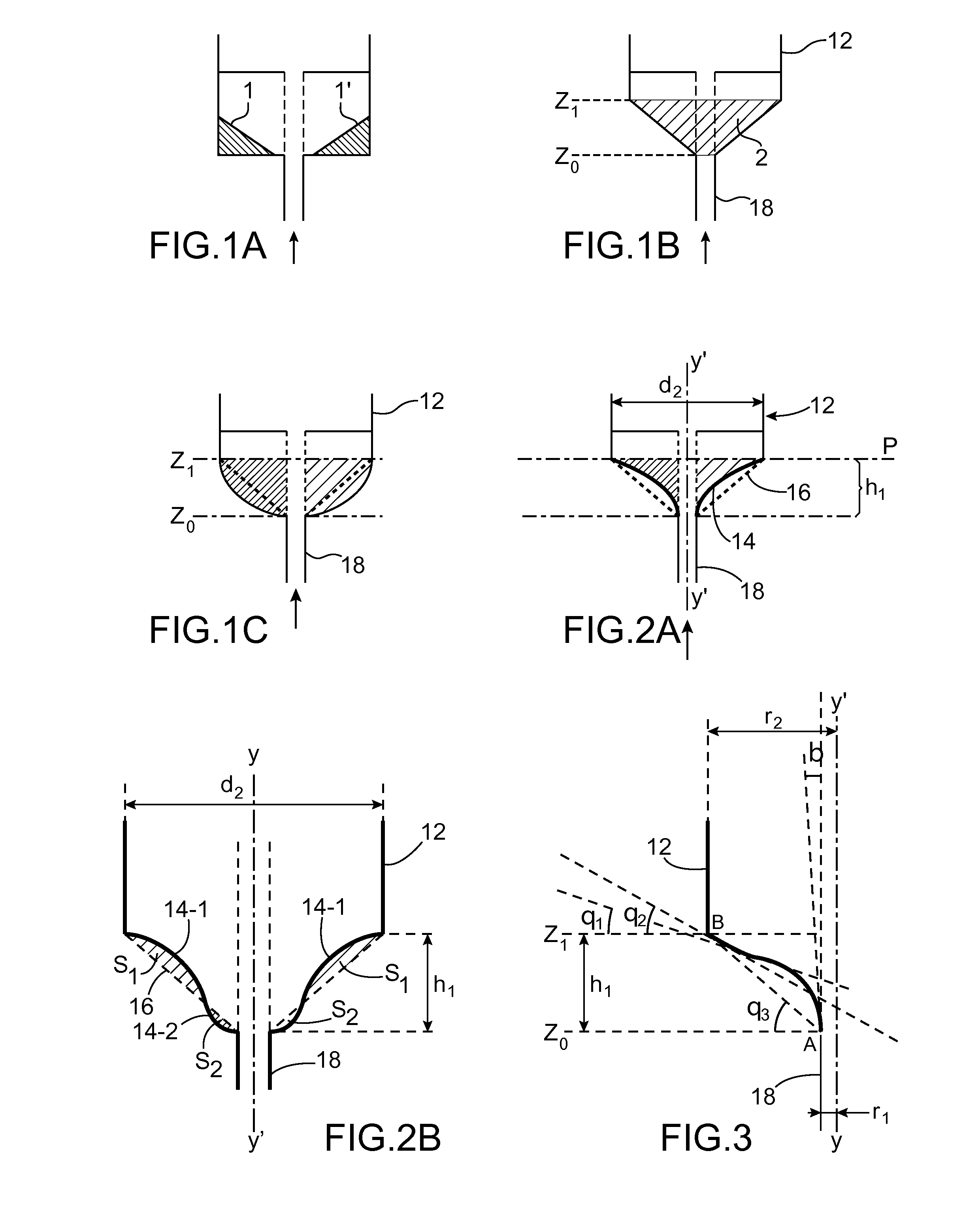Jet Spouted Bed Type Reactor Device Having A Specific Profile For CVD
- Summary
- Abstract
- Description
- Claims
- Application Information
AI Technical Summary
Benefits of technology
Problems solved by technology
Method used
Image
Examples
Embodiment Construction
[0035]A jet spouted bed reactor is described herein, comprising a cylindrical area, a single gas injection pipe at the base of the cylindrical area, and a transition area, connecting the upper end of the pipe to the base of the cylindrical area, this transition area having a predominantly convex profile in a plane extending through the axis of flow of a fluid in the pipe.
[0036]The profile may have areas of convexity and areas of non-convexity; but the areas of non-convexity are predominant, in other words that their areas (or volumes if 3D is considered) as defined, compared to the hollowing out of a conical straight profile, are greater than those of convex areas.
[0037]One thus describes a new transition profile between the injection section of the gas of the jet spouted bed and the cylindrical terminal section (or lower) of the reactor, which makes it possible to minimise the volume of solid to be fluidised which is not comprised in the cylindrical section (volume Vo). This makes ...
PUM
| Property | Measurement | Unit |
|---|---|---|
| Angle | aaaaa | aaaaa |
| Angle | aaaaa | aaaaa |
| Angle | aaaaa | aaaaa |
Abstract
Description
Claims
Application Information
 Login to View More
Login to View More - R&D
- Intellectual Property
- Life Sciences
- Materials
- Tech Scout
- Unparalleled Data Quality
- Higher Quality Content
- 60% Fewer Hallucinations
Browse by: Latest US Patents, China's latest patents, Technical Efficacy Thesaurus, Application Domain, Technology Topic, Popular Technical Reports.
© 2025 PatSnap. All rights reserved.Legal|Privacy policy|Modern Slavery Act Transparency Statement|Sitemap|About US| Contact US: help@patsnap.com



